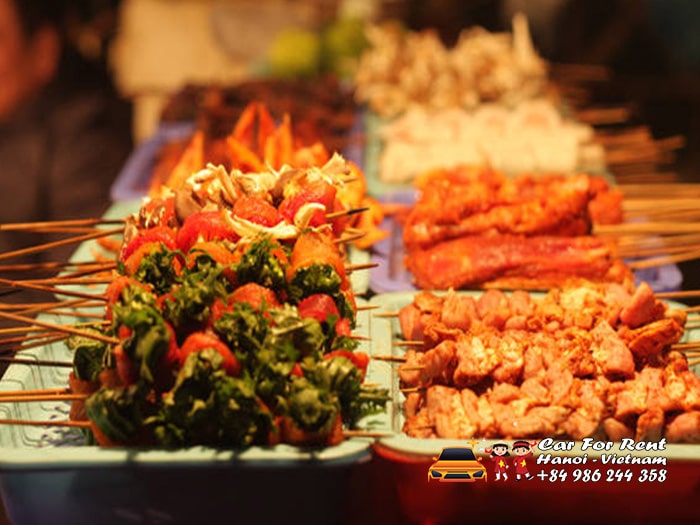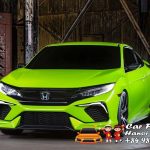vietnam travel guide Vietnam is a beautiful and diverse country that offers something for everyone. Whether you are looking for stunning natural scenery, rich cultural heritage, delicious cuisine, or vibrant nightlife, Vietnam has it all. In this blog post, we will give you a comprehensive guide to Vietnam travel, covering the best time to visit, the visa requirements, the transportation options, the top destinations, the must-try dishes, and the safety tips. Let’s get started!
Best Time to Visit Vietnam
Vietnam has a tropical climate with four distinct seasons: spring (February to April), summer (May to August), autumn (September to November), and winter (December to January). The best time to visit Vietnam depends on your preferences and the regions you want to explore. vietnam travel guide
- If you want to enjoy pleasant weather and avoid the crowds, spring and autumn are ideal seasons. The temperatures are moderate, the rainfall is low, and the flowers are blooming. These are also great times to visit the northern and central regions of Vietnam, such as Hanoi, Halong Bay, Sapa, Hue, and Hoi An. vietnam travel guide

- If you love the sun and the beach, summer is the perfect season for you. The temperatures are high, the humidity is high, and the rainfall is high. This is the best time to visit the southern and coastal regions of Vietnam, such as Ho Chi Minh City, Nha Trang, Phu Quoc, and Mui Ne. You can also enjoy various festivals and events during this season, such as the Tet holiday (Vietnamese New Year), the Hung King Festival, and the Mid-Autumn Festival. vietnam travel guide
- If you don’t mind the cold and want to experience a different side of Vietnam, winter is a good option. The temperatures are low, the humidity is low, and the rainfall is low. This is a good time to visit the mountainous areas of Vietnam, such as Dalat, Ba Na Hills, and Mai Chau. You can also witness some snowfall in some parts of northern Vietnam, such as Sapa and Moc Chau. vietnam travel guide
Visa Requirements for Vietnam
Depending on your nationality and the length of your stay, you may need a visa to enter Vietnam. There are three main ways to obtain a visa for Vietnam:
- Visa on arrival: This is the most convenient and popular option for many travelers. You can apply online for a visa approval letter from a reputable agency before your departure. You will need to print out this letter and bring it with you along with your passport, two passport-sized photos, and some cash (USD or VND) for the stamping fee. Upon arrival at one of the international airports in Vietnam (Hanoi, Ho Chi Minh City, Da Nang or Nha Trang), you will need to fill out a form and present your documents at the visa on arrival counter. You will then receive your visa stamp on your passport within 15 to 30 minutes. vietnam travel guide

- E-visa: This is a new option that was introduced in 2017 for citizens of 80 countries. You can apply online for an e-visa from the official website of the Vietnamese immigration department before your departure. You will need to upload a scanned copy of your passport and a passport-sized photo. You will then receive an e-visa code via email within three working days. You will need to print out this code and bring it with you along with your passport. Upon arrival at one of the designated ports of entry in Vietnam (including some land borders and seaports), you will need to present your documents at the immigration checkpoint. You will then receive your visa stamp on your passport within 10 minutes. vietnam travel guide
- Embassy visa: This is the traditional option that requires you to visit a Vietnamese embassy or consulate in your country or a third country before your departure. You will need to fill out an application form and submit it along with your passport, two passport-sized photos, and some cash for the visa fee. You will then receive your visa stamp on your passport within three to five working days. vietnam travel guide
The visa fees vary depending on your nationality, the type of visa, and the length of stay. The visa validity ranges from 15 days to one year. The visa exemption policy applies to citizens of some countries who can enter Vietnam without a visa for a certain period of time.
For more information on visa requirements for Vietnam travel guide , please check out this website: https://vietnamvisa.govt.vn/
Transportation Options in Vietnam
Vietnam has a well-developed and diverse transportation system that allows you to travel around the country easily and affordably. Here are some of the most common transportation options in Vietnam:
- Plane: This is the fastest and most comfortable way to travel between major cities and tourist destinations in Vietnam. There are several domestic airlines that operate frequent flights, such as Vietnam Airlines, Vietjet Air, Bamboo Airways, and Jetstar Pacific. The prices are reasonable, especially if you book in advance or during promotions. The airports are modern and well-equipped with facilities and services. However, flying can also be subject to delays, cancellations, and baggage issues. vietnam travel guide

- Train: This is a scenic and relaxing way to travel along the coast of Vietnam. There are several train routes that connect the north and the south of the country, such as the Reunification Express, the North-South Railway, and the Hanoi-Lao Cai Railway. The trains are safe and punctual, but not very fast or luxurious. The prices vary depending on the class of seat or berth, from hard seat to soft sleeper. The train stations are usually located in the city center or near tourist attractions. vietnam travel guide
- Bus: This is the cheapest and most convenient way to travel around Vietnam. There are many bus companies that offer regular services to various destinations, such as The Sinh Tourist, Futa Bus Lines, Hoang Long Bus, and Mai Linh Bus. The buses are comfortable and air-conditioned, but not very spacious or clean. The prices are very affordable, especially for short distances. The bus stations are usually located on the outskirts of the city or near major roads. vietnam travel guide
- Car: This is a flexible and independent way to travel around Vietnam. You can rent a car with or without a driver from many agencies or hotels in Vietnam. The cars are modern and well-maintained, but not very cheap or fuel-efficient. The prices depend on the type of car, the duration of rental, and the distance of travel. The roads in Vietnam are generally good, but can be crowded, chaotic, and dangerous. You will need an international driving license and a valid visa to drive in Vietnam. vietnam travel guide
- Motorbike: This is the most popular and adventurous way to travel around Vietnam. You can buy or rent a motorbike from many shops or locals in Vietnam. The motorbikes are cheap and easy to use, but not very safe or reliable. The prices depend on the quality of the motorbike, the duration of rental, and the availability of insurance. The traffic in Vietnam is notorious for being hectic, unpredictable, and risky. You will need a helmet, a license, and a sense of humor to ride a motorbike in Vietnam. vietnam travel guide
Top Destinations in Vietnam
Vietnam has a lot of amazing places to visit that cater to different tastes and interests. Here are some of the top destinations in Vietnam that you should not miss:
Hanoi
Hanoi is the capital and the cultural heart of Vietnam. It is a charming city that blends old and new, tradition and modernity, chaos and tranquility. You can explore the historical and architectural landmarks of Hanoi, such as the Ho Chi Minh Mausoleum, the Temple of Literature, the One Pillar Pagoda, and the Old Quarter. You can also enjoy the vibrant and diverse culture of Hanoi, such as the water puppet show, the street food scene, the coffee culture, and the nightlife.
Halong Bay
Halong Bay is a natural wonder that features thousands of limestone islands rising from the emerald waters of the Gulf of Tonkin. It is a UNESCO World Heritage Site that offers stunning scenery and unique experiences. You can cruise around Halong Bay on a traditional junk boat or a luxury vessel, admiring the karst formations, caves, beaches, and fishing villages. You can also kayak, swim, snorkel, hike, or bike around Halong Bay, discovering its hidden gems and secrets. vietnam travel guide

Sapa
Sapa is a mountainous town that lies in the northwest of Vietnam. It is a popular destination for trekking enthusiasts who want to enjoy the breathtaking views of the Hoang Lien Son range and experience the authentic culture of ethnic minorities. You can hike through rice terraces, waterfalls, bamboo forests, and villages, meeting friendly locals and learning about their customs and traditions. You can also visit the colorful markets, the ancient stone church, the Fansipan peak, and the Silver Waterfall. vietnam travel guide
Hue
Hue is the former imperial capital of Vietnam that showcases the glory and grandeur of the Nguyen dynasty. It is a UNESCO World Heritage Site that preserves the historical and cultural heritage of Vietnam. You can visit the majestic monuments of Hue, such as the Citadel, the Royal Tombs, the Thien Mu Pagoda, and the Forbidden Purple City. You can also enjoy the artistic and culinary delights of Hue, such as the royal cuisine, the folk music, the ao dai fashion, and the conical hats.
Hoi An
Hoi An is a charming and picturesque town that reflects the influence of various cultures and civilizations. It is a UNESCO World Heritage Site that preserves the architectural and cultural diversity of Vietnam. You can stroll around Hoi An’s ancient town, admiring the lantern-lit streets, the wooden houses, the Chinese temples, the Japanese bridge, and the French colonial buildings. You can also shop for souvenirs, get a tailor-made outfit, take a cooking class, or relax on the beach. vietnam travel guide

Ho Chi Minh City
Ho Chi Minh City is the largest and most dynamic city in Vietnam. It is a metropolis that combines modernity and tradition, innovation and history, energy and charm. You can explore the attractions of Ho Chi Minh City, such as the War Remnants Museum, the Notre Dame Cathedral, the Reunification Palace, and the Cu Chi Tunnels. You can also enjoy the lifestyle of Ho Chi Minh City, such as the street food scene, the coffee culture, the shopping malls, and the nightlife.
Mekong Delta
Mekong Delta is a vast and fertile region that lies in the south of Vietnam. It is a land of rivers, canals, islands, orchards, farms, and villages. It is a place where you can experience the rural and authentic side of Vietnam. You can cruise along the Mekong River, visiting floating markets, fruit gardens, coconut factories, and pagodas. You can also bike around Mekong Delta’s countryside, interacting with locals and sampling their delicacies. vietnam travel guide
Must-Try Dishes in Vietnam
Vietnam has a rich and diverse cuisine that reflects its geography, history, and culture. There are many dishes that you should try in Vietnam travel guide , but here are some of the most famous and delicious ones:
- Pho: This is the national dish of Vietnam that consists of rice noodles in a fragrant broth with beef or chicken and herbs. It is a hearty and comforting dish that can be eaten for breakfast or any time of day.
- Banh Mi: This is a Vietnamese sandwich that combines French baguette with various fillings such as pork, pate, ham, cheese, eggs, vegetables and sauces. It is a crunchy and savory snack that can be found everywhere in Vietnam.
- Bun Cha: This is a grilled pork dish that originates from Hanoi. It consists of grilled pork patties or slices served with rice noodles, fresh herbs, pickled vegetables and dipping sauce. It is a flavorful and satisfying dish that can be eaten for lunch or dinner. vietnam travel guide
- Spring Rolls: These are rolls of rice paper filled with meat or seafood, vegetables and herbs. They can be either fresh or fried, depending on your preference. They are usually served with peanut sauce or fish sauce for dipping. They are a light and refreshing appetizer or snack that can be enjoyed anytime.
- Cao Lau: This is a noodle dish that is unique to Hoi An. It consists of thick rice noodles topped with sliced pork, crispy pork skin, bean sprouts, lettuce and herbs. It is seasoned with soy sauce, lime juice and chili and served with crispy crackers. It is a delicious and satisfying dish that can only be found in Hoi An. vietnam travel guide

Safety Tips for Vietnam
Vietnam is generally a safe and friendly country to visit, but there are some things that you should be aware of and avoid to ensure a smooth and enjoyable trip. Here are some safety tips for Vietnam:
- Beware of scams: There are some people who may try to rip you off or trick you into paying more for goods or services. Some common scams include taxi meters, cyclo drivers, shoe shiners, street vendors, and fake tour guides. Always agree on a price before using any service or buying anything. Always check your change and receipts. Always research and book tours from reputable agencies or hotels. vietnam travel guide
- Beware of traffic: The traffic in Vietnam is chaotic and unpredictable. There are many motorbikes, cars, buses, bicycles, and pedestrians on the road, and they do not always follow the rules or signals. Always be careful when crossing the street or riding a motorbike. Always wear a helmet and follow the traffic laws. Always use reputable and licensed transportation providers. vietnam travel guide
- Beware of pickpockets: There are some people who may try to steal your valuables or belongings when you are in crowded or touristy areas. Always keep an eye on your belongings and do not leave them unattended. Always use a secure bag or backpack and keep it close to your body. Always store your passport, money, and cards in a safe place or a hidden pocket. Always make copies of your important documents and keep them separately. vietnam travel guide
- Beware of health issues: There are some health risks that you may encounter when traveling in Vietnam, such as food poisoning, mosquito-borne diseases, sunburn, dehydration, and heatstroke. Always drink bottled water and avoid ice or tap water. Always wash your hands and use sanitizer before eating or touching your face. Always eat cooked food and avoid raw or street food. Always use insect repellent and wear long sleeves and pants when outdoors. Always wear sunscreen and a hat and drink plenty of water when exposed to the sun. vietnam travel guide

Contact us:
Car For Rent Hanoi VietNam
https://zalo.me/0986244358
Conclusion
Vietnam is a wonderful country that has so much to offer to travelers of all kinds. It has a rich history, a diverse culture, a delicious cuisine, and a stunning nature. It is a place where you can have fun, learn, relax, and explore. We hope that this Vietnam travel guide has given you some useful information and tips to plan your trip to Vietnam. We wish you a safe and memorable journey!












